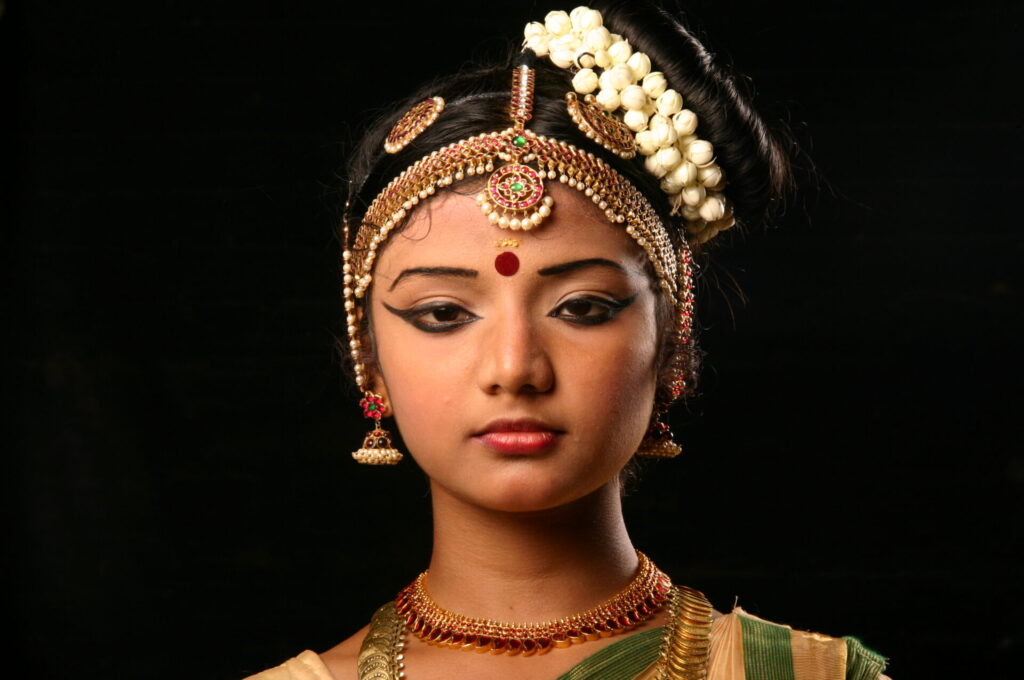How the varnam choreography progresses through Nritha, Nerkai and Manodharama.
We discussed the choreography of Cholkkettu and Jathiswaram in the Mohiniyattam repertoire earlier this week. Varnam, Padam, Slokam, and Saptham are the subsequent items in the Mohiniyattam repertoire that emphasize nritya, abhinaya, or acting, although Nritha or pure dance still features in Varnam and Saptam. Unlike Jathiswaram and Cholkkettu, Varnam’s music has lyrical content.
Nritha and Nrithya aspects are progressively introduced during the performance of a Varnam. The Pallavi and Anupallavi of the song are sung several times during the performance. Initially, the dancer performs Nritha or pure dance when these lines are sung.

Subsequently, the dancer progresses to Nrithya(abhinaya) , eliciting the literal meaning by displaying mudras corresponding to the words in the song. This is called ‘Nerkai’. When the line is repeated, the dancer performs manodharma or improvisation that explores the hidden and abstract meaning of the Varnam. This includes delineating alternative meanings of the words in the song, the overarching message in a line, or narrating a story that substantiates the content. After this, Nerkai is repeated with footwork (Chuvadukal).
Choreographing Varnam
Using abhinaya allows the attainment of rasa in Varnam, Padam, and Saptams, among others. The aesthetic nature and beauty of the beginning of presentations that is characterized by Nritha appeal to everyone. Nerkai part of the dance choreography is for the ordinary educated person. In the Manodharma the verses may be detailed, or a whole story may be told through the line. This section usually appeals to learned and highly qualified individuals.
Exploration of each line of the Varnam in this way is interspersed with Nritha elements. When Jathi’s are used for Nritha they are sung in a raga. This is a specialty of Mohiniyattam from other dance forms.

Swarams are also present in Varnam. These Swarams should be choreographed with adavus, charis, and poses, etc. Pada Varnams usually have more lyrical content compared to Thana Varnams. A Varnam should be choreographed keeping all these aspects in mind.
Amongst the Panchabhoota elements, Varnam is philosophically and metaphorically connected to fire. which represents colors. Varnam gets its full flourish when these colors (Mukharaga) are brought out through abhinaya.
Photo Courtesy: Natanakairali Archives




